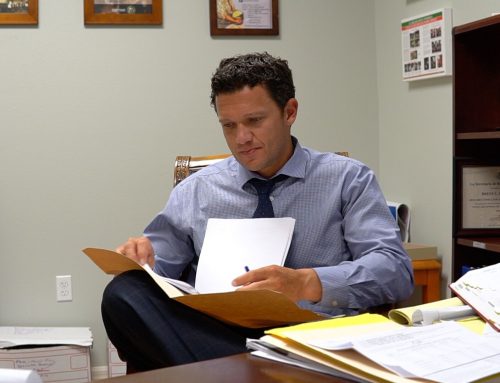If you or a loved one has been injured in an accident caused by another party’s negligence, you will want to obtain your rightful compensation to cover your economic and non-economic damages. In order to prevail in a personal injury case, the plaintiff must prove their case; in other words, the burden of proof falls to the plaintiff.
Given that the burden of proof falls on the plaintiff, the personal injury case may seem to be a bit easier for the defendant – who doesn’t have to prove anything to the court. It is up to the plaintiff to convince the judge and jury that their injuries were caused by the negligence of the other party. So exactly what is required to prove your case?
Did You Know? The burden of proof in personal injury cases is also call “a preponderance of the evidence.” This means that the plaintiff has more convincing evidence than the defendant (not more evidence – just better evidence.)
Burden of Proof in Personal Injury Cases
Personal injury cases are considered under the body of civil law. The burden of proof in civil law is less than under criminal law, which requires a standard of “beyond a reasonable doubt.” In civil courts, plaintiffs are required to provide only enough evidence to indicate a more than 50% chance that the defendant caused the damages in question.
If a jury believes your evidence is “more likely than not” true, you will prevail with a preponderance of the evidence.
Once a plaintiff has presented their proof of the defendant’s negligence and liability, the defendant will either refute that evidence or provide their own evidence that points to a different conclusion. There are several types of evidence that are effective within personal injury lawsuits:
- Eyewitness and expert testimonies
- Accident and police reports
- Photographs from the scene of the accident
- Damage repair estimates
- Medical records, bills, expenses and prognosis
“Prima Facie” Injury Case
A plaintiff is only required to present a “prima facie” case. The Latin term “prima facie” means “on its face”. Legally, you are required to present only enough evidence to convince the court that you have a good reason to sue the defendant for damages. Circumstances which will apply under these terms include:
- The defendant had a duty of care to prevent any kind of harm to you and other people within the given situation
- The defendant did something wrong or with negligence
- The defendant failed to act in a way that any reasonable/rational person would have done in the same set of circumstances
- The defendant breached their duty of care
- The defendant’s breach through a negligent act was the direct cause of your injuries
Damages Applicable Under Personal Injury
- Medical bills/expenses
- Lost wages
- Loss of quality of life
- Pain and suffering
How Personal Injury Attorneys Help with Burden of Proof
Personal injury claims can be complex and complicated, and it only gets murkier when a plaintiff has to negotiate with an at-fault party’s insurance company, who are not motivated to fairly pay out what you deserve.
At Probinsky & Cole, we provide expert guidance in proving everything required to prevail in your personal injury claim. We have been through this process hundreds of times, and have successfully won cases for our clients over many years. We’re here to assist and navigate through your case’s burden of proof from the beginning. If you have had an accident and believe you have a case, contact us for a free consultation.







